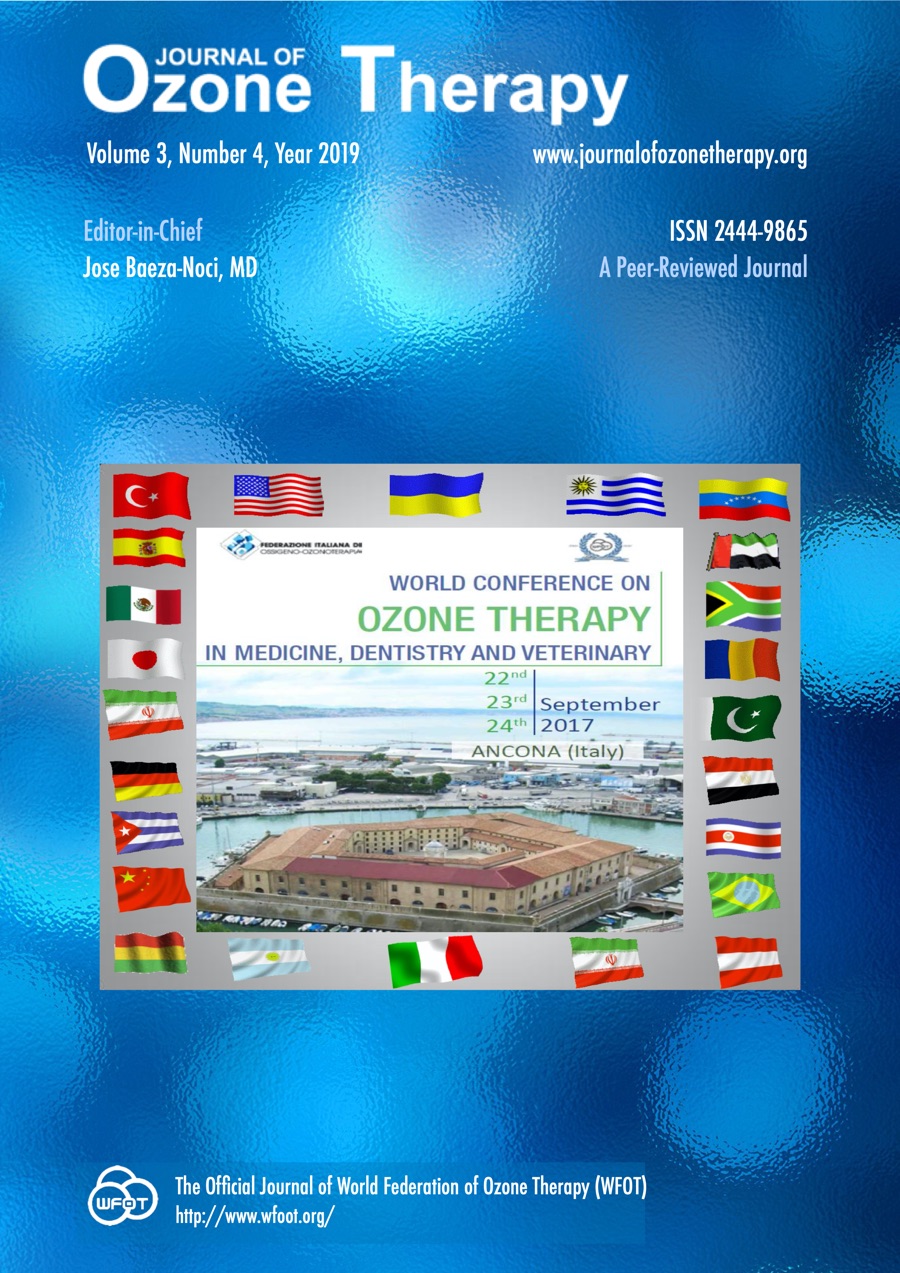Water and air ozone treatment as an alternative sanitizing technology [abstract]
DOI:
https://doi.org/10.7203/jo3t.3.4.2019.15426Keywords:
water sanitization, ozone Abstract
Abstract
PURPOSE: Investigate the effectiveness of ozone treatment as an alternative sanitizing technology to conventional disinfectants in reducing the microbial contamination of both water and air.
METHODS: Ozone was added for 20 minutes to a well-defined volume of water and air by the system named “Ozonomatic®”. The effectiveness of ozonation was determined by counting CFU/m3 or mL of bacteria present in samples of air or water collected before (T0) and after (T1) the addition of ozone and comparing the microbial load of different bacteria present in ozonized and non-ozonized samples.
RESULTS: When the ozonation equipment was located at 30 cm from the surface of the water in the bath tub in which the bacteria were inoculated, the treatment was able to reduce the microbial load present in the aerosol by 70.4% at a temperature of 36°C for 48 hours. Conversely, at 22°C for 5 days, only a modest decrease (9.1%) was observed. Escherichia coli and Pseudomonas aeruginosa were completely eliminated. A 93.9% reduction was observed for Staphylococcus aureus, followed by Streptococcus faecalis (25.9%). The addition of ozone to water was able to almost eliminate Staphylococcus aureus (98.9% reduction) and also to exert a strong impact on Legionella pneumophila (87.5% reduction). Streptococcus faecalis and Pseudomonas aeruginosa showed a decrease of 64.2% and 57.4%, respectively. Conversely, only a 26.4% reduction was observed for the bacterium Escherichia coli. This study showed that the addition of ozone in the air exerted a modest reduction on microbial load at 36°C, whereas no effect was observed at 22°C.
CONCLUSIONS: Aqueous and gaseous ozone treatments were effective against microbial contaminants, reducing the CFU of the microorganisms and confirming its efficacy in water and air disinfection.
 Downloads
Downloads
Downloads
Published
How to Cite
-
Abstract888
-
PDF472
Issue
Section
License
Journal of Ozone Therapy applies the Creative Commons Attribution-NonCommercial 4.0 International License (CC BY NC 4.0) license to works we publish.
Under this license, authors retain ownership of the copyright for their content, but allow anyone to download, reuse, reprint, modify, distribute and/or copy the content as long as the original authors and source are cited. No permission is required from the authors or the publishers.
You may not use the material for commercial purposes.
Appropriate attribution can be provided by simply citing the original article, provide a link to the license, and indicate if changes were made.
You may do so in any reasonable manner, but not in any way that suggests the licensor endorses you or your use.




